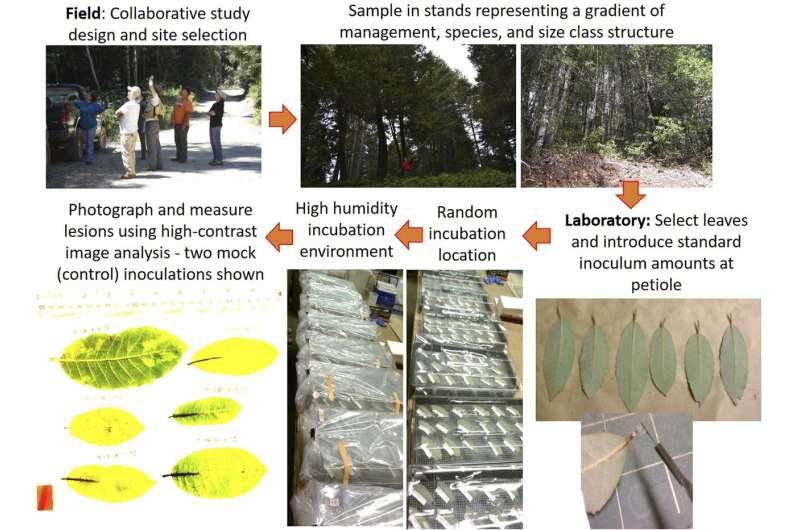New study works with historically disenfranchised communities to combat sudden oak death

Science often reflects the priorities of dominant industries and ignores the needs of disenfranchised communities, resulting in the perpetuation of historical injustices. One team of scientists in Northern California studying sudden oak death, which poses a threat to the longstanding cultural heritage of several indigenous tribes, sought to chip away at this cycle through a new collaboration with these communities.
Sudden oak death has killed 50 million trees since emerging in 1995 and is an impending threat to the tanoak trees in Northern California. Tanoak, an evergreen tree, is native to the western United States and prolific along the California coast. In these regions it is revered by many indigenous tribes, including the Hoopa and Yurok, who value the tree as a source of food and medicine. The tanoak also holds an important role in their religious practices.
To develop resistance measures that represented the interests and unique perspectives of these tribes, the team of scientists worked with the tribal forest managers and community members to identify proactive ways to prevent the spread of sudden oak death. Through this partnership, the scientists were able to publish a paper bringing together indigenous land management, ecology, genetics, pathology, and epidemiology.
"I mostly work on the mathematical side," said co-author Noam Ross, who created the simulations and software used in the paper, "but it's important how that can be used to understand and manage the cultural and social effects of this forest disease, which has had significant impacts in these communities."
The results of this study, published in Promise and Pitfalls of Endemic Resistance for Cultural Resources Threatened by Phytophthora ramorum in Phytopathology, underscore the importance of collaboration between different interest groups. "This collaborative approach holds valuable lessons for researchers and managers working to empower a broader cross section of stakeholders," says author Richard Cobb.
More information: Richard C. Cobb et al, Promise and Pitfalls of Endemic Resistance for Cultural Resources Threatened by Phytophthora ramorum, Phytopathology (2018). DOI: 10.1094/PHYTO-04-18-0142-R
Provided by American Phytopathological Society

















